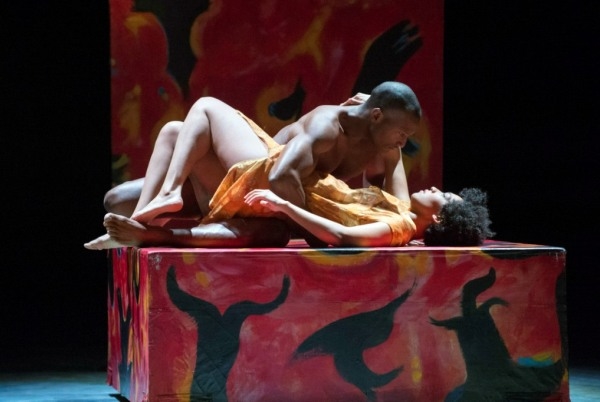The Indian Queen (London Coliseum) – 'latent hippiedom'

© ENO/Richard Hubert Smith
Far from breaking new ground, then, this new adaptation for English National Opera of Purcell’s The Indian Queen by American director Peter Sellars feels like a throwback.
The original work has nothing in common with the composer's similarly-named The Fairy Queen, nor with the mother of Titania’s changeling boy; but it has little to do with the Sellars version either. That’s fair enough: Purcell only composed 45 minutes of music for his unfinished fragment based on Robert Howard and John Dryden’s exotic fantasy, so there’s no reason why it shouldn’t lend itself to an intelligent theatrical rendering. If only this were it.
The decision to fatten Purcell’s contribution with a stack of his other music is welcome – we hear precious little of his output nowadays as it is – but the clash of cultures between Europeans and Mayans in Rosario Aguilar’s The Lost Chronicles of Terra Firma, on which Sellars bases his new drama, offers a frustratingly elusive dramatic foundation. And increasingly during its three-and-a-half hour running time I found myself hankering instead for the 50 glorious minutes of Dido and Aeneas, the composer’s compact masterpiece.
Poor Maritxell Carrero is saddled with a busy evening of declaimed narration that she delivers with a straight face even when it sinks into bathos and contends for the bad sex award. And while it’s not the ENO choristers’ fault that they aren’t a diverse bunch, Sellars does them no favours by introducing them to a drama about ethnicity like participants at a village community play. Thank goodness they sing as well as they do – albeit less so when lying on their backs, as is also the case with several of the solo singers.
'The real beauty arises from the pit'
Pick of the latter are Lucy Crowe, who whitens her tone with gracious subtlety in her role as Doña, and Noah Stewart, ripped and stripped as Don Pedro and as handsome of voice as he is of physique. The American tenor’s timbre is full and even, and it grows richer still when he dips into the baritone register.
Not all of their colleagues are at the same level, although Julia Bullock, who on opening night had intonation issues throughout part one, found her form in time for a ravishing late duet with Crowe.
Scenic designs by the fabulously named Gronk are a striking gallery of primitive paintings that range from hand-held images to giant backdrops. There’s also some thrilling modern dance, and plenty of it, that’s choreographed by Christopher Williams and performed by Sonya Cullingford, Alistair Goldsmith, Lucy Starkey and Jack Thomson. What a shame they wear what appear to be Spanx in part one and bedtime onesies in part two.
The real beauty arises from the pit, which has been raised up to floor level (as it was with The Magic Flute) in order to favour the more timidly-sounding period instruments that help turn the ravishing ENO Orchestra into a convincing if not wholly authentic historically informed band. Laurence Cummings directs proceedings with a musician’s joy, and it’s the sound he elicits – rather than Sellars’s concept – that is the evening’s dream.










